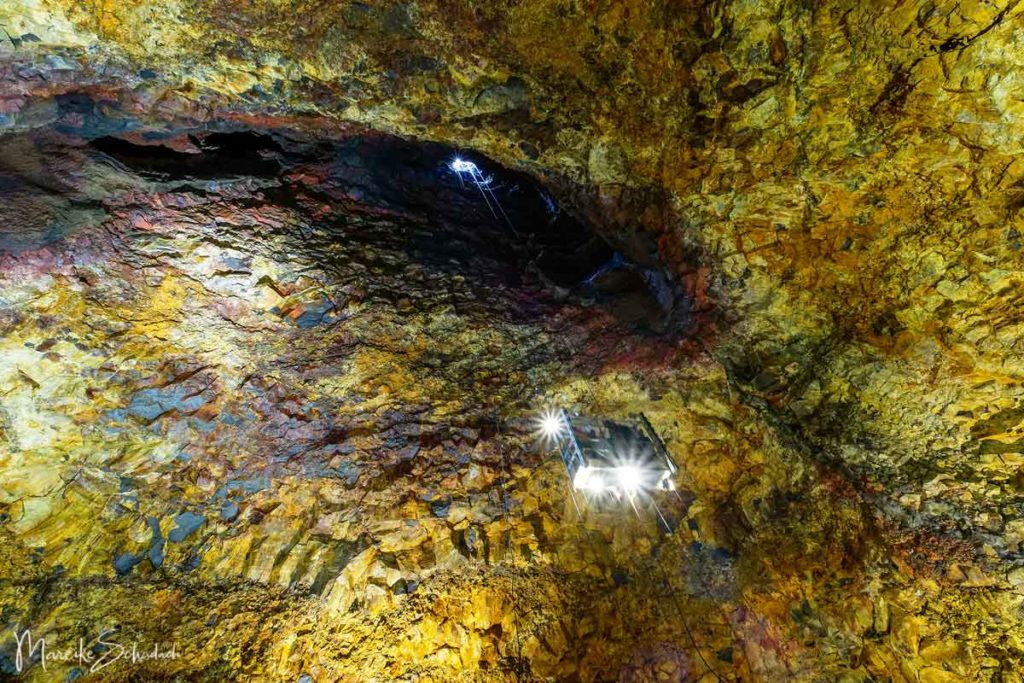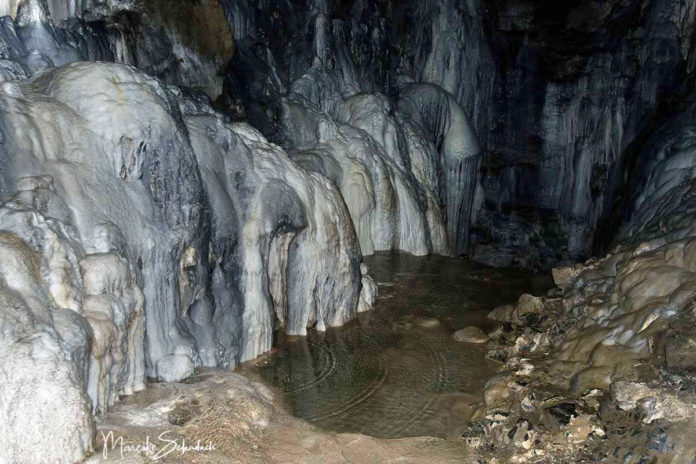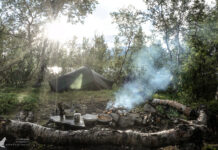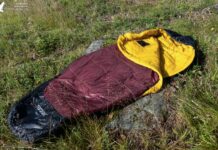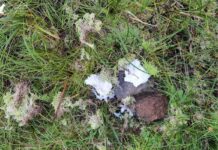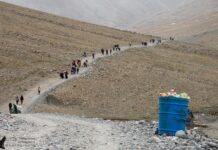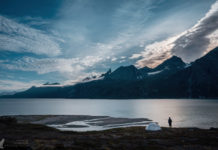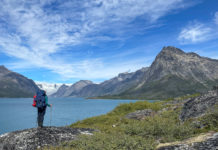Scotland. White limestone formations remind one of icy waterfalls. Stalactites hang from the cave ceiling and a pitch-black lake makes the mystical atmosphere even more mystical. A trip to this beautiful sea cave is a little adventure and awakens the desire for discovery. Here you can learn all about a visit to Spar Cave on the Isle of Skye.
Unassigned, unpaid advertising. The article contains affiliate links.

Discover a sea cave with real dripstone formations on your own? Without marked out visitor paths and permanently installed artificial lighting? Sounds almost too good to be true. To visit Spar Cave on the Isle of Skye, you have to plan ahead because it is only accessible at low tide. But more about that later.

Curious? Here you can enter the cave directly!
Don't forget your flashlights! A Head lampis the best choice, because you climb a steep sinter staircase in the cave. Also take at least one spare lamp with you.
Where is the Spar Cave?
Spar Cave is located near the charming village of Elgol, in the southwest of the Isle of Skye. From Broadfort you drive about half an hour to Elgol. A ride to enjoy - because with the view of the Cuillin Hills it is one of the most scenic routes on Skye.
From Elgol it's another 5 minutes drive to Glasnakille. You can park your car in front of the cattle grid just before the T-junction at Glasnakille. By the way: there is also a bus to Glasnakille.
How does one get to the Cave?
Trail from the Parking Lot to the Water
From the parking lot turn right at the T-junction. Behind a ruin of a stone building you will enter the field through a gate. From here a path leads down to the coast. Keep right and do not follow the path to the left. A steep descent leads you into a narrow bay. The ground is covered with large boulders, but they are easy to climb over.

Over Rocks along the Coast
As soon as the water level is low enough, you can climb from the bay over the rocks to the left. This can sometimes be a bit slippery, because the rocks are covered with seaweed and algae in places. The lower the water level is, the easier it gets.

Behind the headland follows another bay. But only the second bay is the entrance to Spar Cave. This gorge is about 10 meters wide and 70 meters long. The entrance to the cave is at the very end of the gorge and is framed by vertical rock walls up to 20 meters high.

Waiting for the Low Tide - the Access to Spar Cave
With dry Feet into the Cave
The access to the cave is only possible during low tide with dry feet. You have a time window of about 2 hours - one hour before the lowest water level and one after. You can check the tides here The time window of 2 hours is absolutely sufficient to visit the cave. The cave is about 100 meters deep and can be explored relatively quickly. You can't get lost in the cave because there are no branches.

If it happens anyhow and the tide surprises you, you are not in danger or trapped in the cave. In front of the cave entrance there is enough space under the open sky. You only have to wait about 12 hours until the next low tide.
But there is another way:
(the water level must have sunk a bit before you can enter the first two bays)
Climbing
Are you fit in Climbing? Then you can climb a little earlier on the rock face towards the cave. The wall is vertical, but has many protrusions. I tried it, but I turned back with a little shaky knees. Others were more courageous and made it.

By the way: That afternoon we were not the only cave explorers who went to the Spar Cave of Skye. But the gorge and cave were by no means overcrowded. There was a really nice atmosphere in front of the entrance. Everybody helped the others with tips and tricks without appearing arrogant or know-it-all. Really nice!
Wading
We were down by the water in front of the cave before the recommended access time. Our curiosity was just too great and we didn't want to wait any longer. The climbing didn't work out, so shoes off and on through the water. We were able to walk barefoot (I know one shouldn't do that) quite well on the rocks, our trekking poles gave us stability. But it was a pretty wet affair, the water went up to my knee at one point. Other visitors were better equipped and had waders with them.
On the way back we came back with dry feet and easy climbing. Maybe we should have just waited a few more minutes for the way there...

snorkeling
Snorkeling is certainly the coolest and most elegant way to visit a sea cave. Then you will be completely independent from the tides and also experience the great underwater world with the lush seaweed.
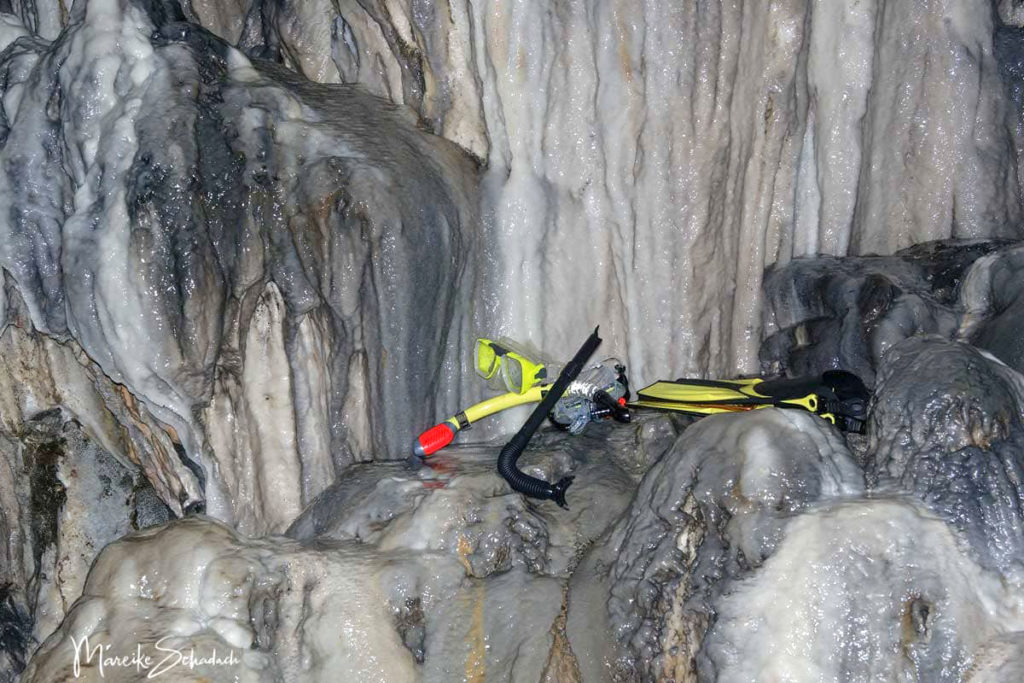
In the Spar Cave on the Isle of Skye
There are two cave entrances. The right one ends after about 20 meters, the left one is the entrance to Spar Cave. It is about 100 meters long and two to four meters wide with high vertical walls.

The further you penetrate into the cave, the more beautiful it becomes. The walls and floor are now covered with white flowstone formations of deposited calcium carbonate. Soon the cave floor rises and you are standing in front of a sinter staircaseabout 10 meters high. It reminds you of an icy waterfall and looks damn slippery. However, once again it offers a good grip and can be walked on.

From its highest point you look down on a small cave lake. Pitch black it lies in front of us and is the end of the cave for us. Behind the lake, however, the passage continues a bit further until reaching a second lake. The water is really cold. So we were told by two snorkelers who fearlessly made their way to the end of the cave.

Above the lake, where they are unreachable, there are still some Stalactiteshanging. They are beautiful. Once there should have been much more. But former cave visitors took them home as trophies. Do not copy them!!! Respect the nature. Then many visitors after you can still enjoy the beauty of the cave and the centuries old stalactites.

Flowstones are cave formations made up of mineral deposits that are typically formed in limestone caves - so-called solution caves. The formations consist of layered deposits of calcite or other carbonate minerals. They are formed where water flows along the walls or floors of a cave. Stalactites on the other hand, are mineral deposits that hang down from the cave ceiling.

Spar Cave as Baby Hiding Place
Auf Gälisch heißt die Spar Cave “Sloched Altrimen” was soviel wie “Säuglingshöhle” The name has its origin in the time of the clans: The daughter of a clan leader had to hide her baby temporarily in the cave. Because it was from the son of an enemy clan chief.
By the way: not only a baby was hidden in a cave. Bonnie Prince Charlie was also hiding in different caves on the Isle of Skye, one of them is very close to Spar Cave. This cave is also only accessible at low tide.
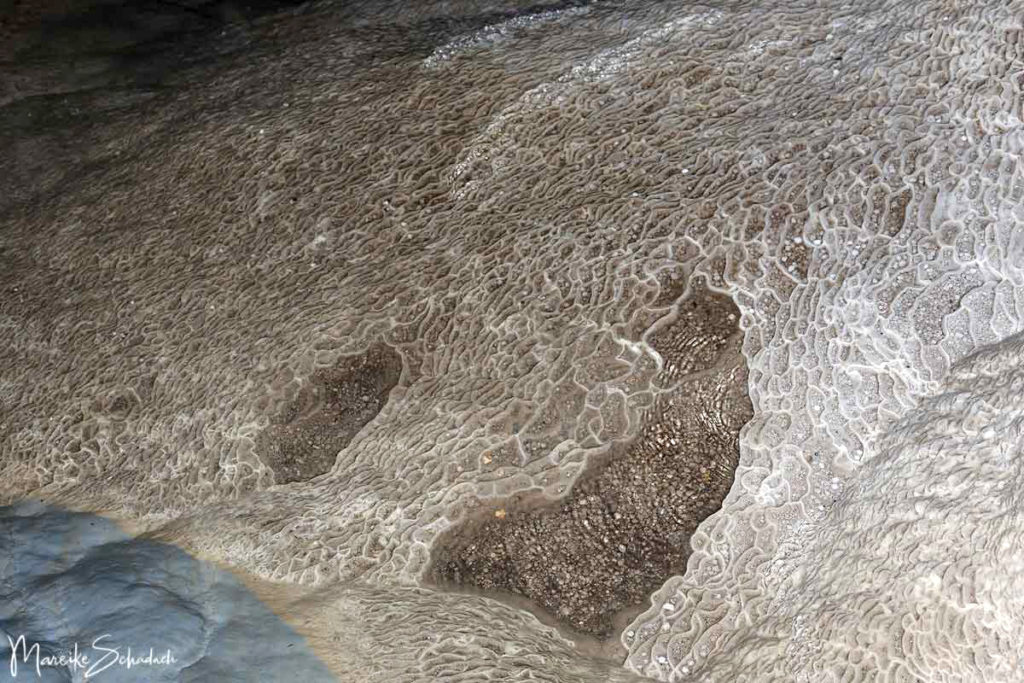
What is there near Spar Cave?
In the southwest of the Isle of Skye there are a few more places worth seeing besides Spar Cave. Here are a few tips for the road:
- Photo stop at the Church of Kilchrist - a ruined church with a cemetery.
- At Loch Slapin there are great opportunities for camping (watch out for midges).
- From the pier in Elgol you have the best view of the Cuillins.
- At the beach of Elgol you will find an extraordinary rock - the Bee Rock. It looks like a huge honeycomb.
- In Elgol, boat trips start to Loch Coruisk in the heart of the Cuillin Hills. Besides the beautiful landscape you have the chance to observe wildlife: Seabirds, sea eagles, dolphins, giant sharks, minke whales and sometimes even orcas.
- Do you like hiking? A nice day trip (about 22 km) through the Cuillins is the hike from Elgol or Kilmarie to Sligachan.
Book Recommendations for Scotland
You want to know where the journey goes? Then I recommend the following travel guides, which have proven themselves on my trip:
Do caves also fascinate you so much? Which is your favorite cave? Do you have any questions or suggestions about my article? If so, please write me a comment!
Do you want to know when there are new articles on my blog? Then follow me on Facebook, Pinterest or Instagram. I would also be very happy if you share my article with your friends.
Recommendations for further Reading
Attention cave fans! I would like to show you two very special caves. Both are located in Iceland. The first one is an Ice Cave at the Volcano Katla and the second one is the extinct Volcano Thrihnukagigur, which you can visit from inside.

